#computational biology
Text
Pssst. Hey. You.
Yea. You.
Want some of that good Stim?
Got headphones and 5 minutes?
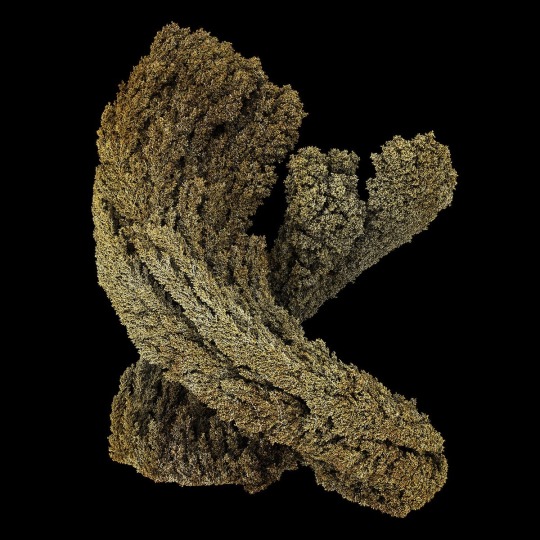
“Order From Chaos” - Max Cooper (Emergence)
youtube
68 notes
·
View notes
Link
In 2023, bioinformatics discoveries have catalyzed immense progress across the life sciences landscape. These ground-breaking discoveries have provided insight into the complex workings of biological systems, processes, and disease states. From discovering new diagnostic markers to mapping the complexity of the brain, these innovations promise to transform medicine, evolution, and beyond. The pace of bioinformatics discoveries fueled by the rise of artificial intelligence heralds a new era of opportunity. In this article, we take a closer look at 10 of the best bioinformatics innovations of the year and their profound impact on the field of biology. Get ready for an exciting journey to the greatest discoveries in bioinformatics!
#1 CRACKING THE CODE OF MYSTERIOUS “Y” CHROMOSOME
Scientists have struggled for decades to sequence the enigmatic Y chromosome essential to male biology. The Telomere-to-Telomere (T2T) consortium presented the complete sequence of the human Y chromosome, encompassing 62,460,029 base pairs from the HG002 genome (T2T-Y). Thanks to new computational techniques, they can finally peer into its genetic blueprint and understand male infertility and human evolution like never before.
Continue Reading
57 notes
·
View notes
Text
When the honeymoon phase of the semester is over and now I have two presentations, two class tests and two assignments due the next week, all of a sudden!! Like excuse me, lemme breathe for a second.
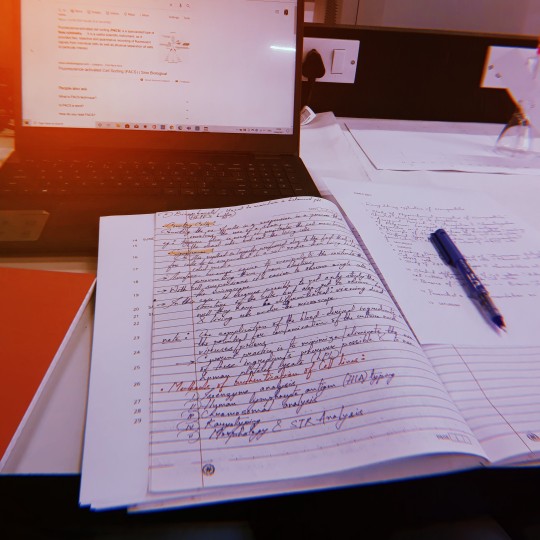
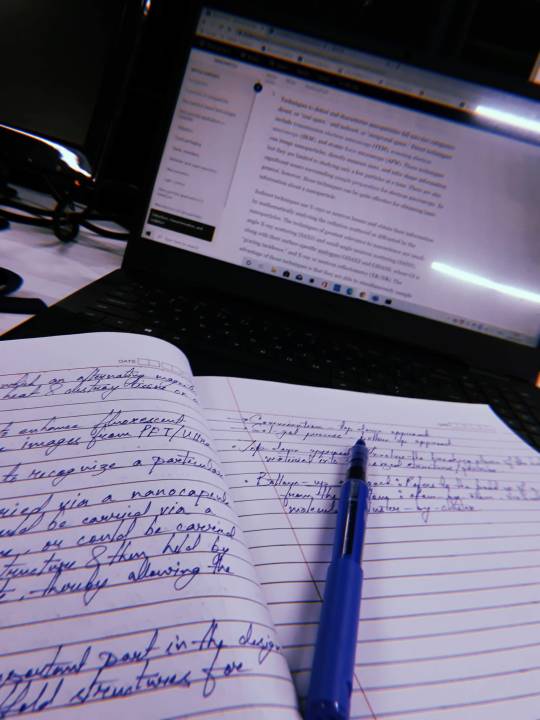
#studyblr#stem academia#academia aesthetic#academia#chaotic academia#biology academia#chaotic academia moodboard#academics#study aesthetic#studying#study desk#studyblr community#studyinspo#student life#university#molecular biology#biology#bioinformatics#biotechnology#computational biology
79 notes
·
View notes
Text


Rainy evening at the library 🩷
6/15/23
I rewrote my code to make it work with the full dataset, also to make it, uh, actually do what it's supposed to. Currently running it to test if it worked, which takes about an hour (look, I didn't realize I'd be coding when I bought my laptop, okay?). I was going to just take my laptop back to my apartment while it runs, but the rain prevented me from doing that, which means I have a lovely excuse to curl up in the library with a fun book. Fingers crossed the program finishes before the library closes.
#julietdoesaresearchinternship#julietstudies#studyblr#student#studying#biology#bio student#coding#juliet studies#python#computational biology
146 notes
·
View notes
Note
Hii how are you doing!!!
You're taking Bioinformatics too right? What resources are you using to understand it HELP—
Hii I'm good, thanks! Hbu? That's so cool you're self-studying bioinformatics too! You're coming from the bio side as well, right?
I haven't really gotten into actual bioinformatics stuff yet bc last I tried, I was overwhelmed by all the info I was expected to know...biology, stats, and coding/computer science stuff. I feel I still need to know more on all of those fronts, but coming from a life science background, the part that's most foreign to me is the coding aspect, so I'm trying to work through an intro to computer science mooc by Harvard called cs50x and figure out where to go from there... Also, the codeblr community has been nothing but extremely encouraging and helpful. Many have compiled resources for learning to code like in this post.
Sorry if this wasn't very helpful, I'm at the very very very beginning in this 😅 Maybe once I'm further along, I'll know enough to make a masterpost of resources I used and found helpful!
If anyone has any other suggestions, please feel free to add in the reblogs!
#stemblr#studyblr#chemblr#stem academia#stem student#codeblr#progblr#bioinformatics#computational biology#asks#mittonstudies#heyfrithams#heyharri#heydilli#heyzainab#benniscup#myhoneststudyblr#genomics#bioblr
19 notes
·
View notes
Text
Student spotlight: Victory Yinka-Banjo
New Post has been published on https://thedigitalinsider.com/student-spotlight-victory-yinka-banjo/
Student spotlight: Victory Yinka-Banjo


This interview is part of a series from the MIT Department of Electrical Engineering and Computer Science featuring students answering questions about themselves and life at the Institute. Today’s interviewee, Victory Yinka-Banjo, is a junior majoring in MIT Course 6-7: Computer Science and Molecular Biology. Yinka-Banjo keeps a packed schedule: She is a member of the Office of Minority Education (OME) Laureates and Leaders program; a 2024 fellow in the public service-oriented BCAP program; has previously served as secretary of the African Students’ Association, and is now undergraduate president of the MIT Biotech Group; additionally, she is a SuperUROP Scholar; a member of the Ginkgo Bioworks’ Cultivate Fellowship (a program that supports students interested in synthetic biology/biotech); and an ambassador for Leadership Brainery, which equips juniors/leaders of color with the resources needed to prepare for graduate school. She recently found time to share a peek into her MIT experience.
Q: What’s your favorite building or room within MIT?
A: It has to be the Broad Institute of MIT and Harvard on Ames Street in Kendall Square, where I do my SuperUROP research in Caroline Uhler’s lab. Outside of classes, you’re 90 percent likely to find me on the newest mezzanine floor (between the 11th and 12th floor), in one of the UROP [Undergraduate Research Opportunities Program] rooms I share with two other undergrads in the lab. We have standing desks, an amazing coffee/hot chocolate machine, external personal monitors, comfortable sofas — everything, really! Not only is it my favorite building, it is also my favorite study spot on campus. In fact, I am there so often that when friends recently planned a birthday surprise for me, they told me they were considering having it at the Broad, since they could count on me being there.
I think the most beautiful thing about this building, apart from the beautiful view of Cambridge we get from being on one of the highest floors, is that when I was applying to MIT from high school, I had fantasized working at the Broad because of the groundbreaking research. To think that it is now a reality makes me appreciate every minute I spend on my floor, whether I am doing actual research or some last-minute studying for a midterm.
Q: Tell me about one interest or hobby you’ve discovered since you came to MIT.
A: I have become pretty involved in the performing arts since I got to MIT! I have acted in two plays run by the Black Theater Guild, which was revived during my freshman year by one of my friends. I played a supporting role in the first play called “Nkrumah’s Last Day,” which was about Ghana at a time of governance under Kwame Nkrumah, its first president. In the second play, a ghost story/comedy called “Shooting the Sheriff,” I played one of the lead roles. Both caused me to step way out of my comfort zone and I loved the experiences because of that. I also got to act with some of my close friends who were first-time stage actors as well, so that made it even more fun.
Outside of acting, I also do spoken word/poetry. I have performed at events like the African Students Association Cultural Night, MIT Africa Innovate Conference, and Black Women’s Alliance Banquet. I try to use my pieces to share my experiences both within and beyond MIT, offering the perspective of an international Nigerian student. My favorite piece was called “Code Switch,” and I used concepts from [computer science] and biology (especially genetic code switching), to draw parallels with linguistic code-switching, and emphasize the beauty and originality of authenticity. This semester, I’m also a part of MIT Monologues and will be performing a piece called “Inheritance,” about the beauty of self-love found in affection transferred from a mother.
Q: Are you a re-reader or a re-watcher — and if so, what are your comfort books, shows, or movies?
A: I don’t watch too many movies, although I used to be obsessed with all parts of “High School Musical;” and the only book I’ve ever reread is “Americanah.” I would actually say I am a re-podcaster! My go-to comfort-podcast is this episode, “A Breakthrough Unfolds”, by Google DeepMind. It makes me a little emotional every time I listen. It is such an exemplification of the power of science and its ability to break boundaries that humans formerly thought impossible. As a computer science and biology major, I am particularly interested in these two disciplines’ applications to relevant problems, like the protein-folding problem discussed in the episode, which DeepMind’s solution for has caused massive advances in the biotech industry. It makes me so hopeful for the future of biology, and the ways in which computation can advance human health and precision medicine.
Q: Who’s your favorite artist?
A: When I think of the word ‘artist,’ I think of music artists first. There are so many who I love; my favorites also evolve over time. I’m Christian, so I listen to a lot of gospel music. I’m also Nigerian so I listen to a lot of Afrobeats. Since last summer, I’ve been obsessed with Limoblaze, who fuses both gospel and Afrobeats music! KB, a super talented gospel rapper, is also somewhat tied in ranking with Limo for me right now. His songs are probably ~50 percent of my workout playlist.
Q: It’s time to get on the shuttle to the first Mars colony, and you can only bring one personal item. What are you going to bring?
A: Oooh, this is a tough one, but it has to be my Brass Rat. Ever since I got mine at the end of sophomore year, it’s been nearly impossible for me to take it off. If there’s ever a time I forget to wear it, my finger feels off for the entire day.
Q: Tell me about one conversation that changed the trajectory of your life.
A: Two specific career-defining moments come to mind. They aren’t quite conversations, but they are talks/lectures that I was deeply inspired by. The first was towards the end of high school when I watched this TEDx Talk about storing data in DNA. At the time, I was getting ready to apply to colleges and I knew that biology and computer science were two things I really liked, but I didn’t really understand the possibilities that could be birthed from them coming together as an interdisciplinary field. The TEDx talk was my eureka moment for computational biology.
The second moment was in my junior fall during an introductory lecture to “Lab Fundamentals for Bioengineering,” by Professor Jacquin Niles. I started the school year with a lot of confusion about my future post-grad, and the relevance of my planned career path to the communities that I care about. Basically, I was unsure about how computational biology fit into the context of Nigeria’s problems, especially because my interest in the field is oriented towards molecular biology/medicine, not necessarily public health.
In the U.S., most research focuses on diseases like cancer and Alzheimer’s, which, while important, are not the most pressing health conditions in tropical regions like Nigeria. When Professor Niles told us about his lab’s dedication to malaria research from a molecular biology standpoint, it was yet another eureka moment. Like, Yes! Computation and molecular biology can indeed mitigate diseases that affect developing nations like Nigeria — diseases that are understudied, and whose research is underfunded.
Since his talk, I found a renewed sense of purpose. Grad school isn’t the end goal. Using my skills to shine a light on the issues affecting my people that deserve far more attention is the goal. I’m so excited to see how I will use computational biology to possibly create the next cure to a commonly neglected tropical disease, or accelerate the diagnosis of one. Whatever it may be, I know that it will be close to home, eventually.
Q: What are you looking forward to about life after graduation? What do you think you’ll miss about MIT?
A: Thinking about graduating actually makes me sad. I’ve grown to love MIT. The biggest thing I’ll miss, though, is Independent Activities Period (IAP). It is such a unique part of the MIT experience. I’ve done a web development class/competition, research, a data science challenge, a molecular bio crash course, and a deep learning crash course over the past three IAPs. It is such an amazing time to try something low stakes, forget about grades, explore Boston, build a robot, travel abroad, do less, go slower, really rejuvenate before the spring, and embrace MIT’s motto of “mind and hand” by just being creative and explorative. It is such an exemplification of what it means to go here, and I can’t imagine it being the same anywhere else.
That said, I look forward to graduating so I can do more research. My hours spent at the Broad thinking about my UROP are always the quickest hours of my week. I love the rabbit holes my research allows me to explore, and I hope that I find those over and over again as I apply and hopefully get into PhD programs. I look forward to exploring a new city after I graduate, too. I wouldn’t mind staying in Cambridge/Boston. I love it here. But I would welcome a chance to be somewhere new and embrace all the people and unique experiences it has to offer.
I also hope to work on more passion projects post-grad. I feel like I have this idea in my head that once I graduate from MIT, I’ll have so much more time on my hands (we’ll see how that goes). I hope that I can use that time to work on education projects in Nigeria, which is a space I care a lot about. Generally, I want to make service more integrated in my lifestyle. I hope that post-graduation, I can prioritize doing that even more: making it a norm to lift others as I continue to climb.
#2024#Africa#amazing#applications#artists#Arts#attention#bioengineering#Biology#biotech#birthday#book#Books#Broad Institute#Building#Cancer#career#career path#challenge#classes#code#coffee#colleges#Color#computation#Computational biology#computer#Computer Science#conference#course
2 notes
·
View notes
Text

I can’t express how much pride this gave me????
4 notes
·
View notes
Text
Machines could not be fashioned in the image of a man's mind, he said, but he betrayed every action that he preferred machines to men, statistics to individuals, the far away general view to the intimate personal touch requiring imagination and initiative.
Frank Herbert, Dune Messiah
#computational biology#remote work#neurodiversity#aspergers#frank herbert#herbert#dune messiah#dune: messiah#1969#herbert 1969#dune saga
2 notes
·
View notes
Text
I PASSED MY MASTER THESIS DEFENCE....I HAVE GONE AND COMPLETED A MASTERS DEGREE
#MSc part 1 done#to be continued#sooo happy#and proud of myself#studyblr#gradblr#stemblr#computational biology#systems biology#bioinformatics
39 notes
·
View notes
Text
if anyone knows molecular docking can you please reach out to me please i need help asap or can you suggest different sites please
Im fucking losing it over a step
#please help#autodock#molecular docking#Chimera#pymol#bioinformatics#computational biology#biology#biotechnology#drug design#structural biology
3 notes
·
View notes
Text
A Short Course In Computational Geometry And Topology
[A Short Course in Computational Geometry and Topology. Herbert Edelsbrunner. 2014. Publisher: Springer. Book series: SpringerBriefs in Applied Sciences and Technology. Sub series: SpringerBriefs in Mathematical Methods. Pages: IX, 110. Softcover ISBN: 978-3-319-05956-3. Thanks to publisher for publication details]
For many decades the job title statistician was sufficient to describe a practice involving mathematics, computation, and more than a smidgen of artistry and intuition. In today’s complex, extremely fast-paced digital world, this title is no longer sufficient; instead, the terms data scientist and machine learning expert have become pre-eminent. Along with this upgrade in nomenclature has come an explosion in techniques that straddle the admittedly fuzzy boundaries between mathematics, computer science, statistics, and even the physical sciences from which a great many inspirations and innovations are drawn.
One of the most fascinating (at least to this writer) developments over the past 15 years or so has been a subject loosely called TDA, or topological data analysis. Simply put, this technique seeks to locate and recognize patterns within numerical and semi-numerical data that is generally hidden behind a veil of nebulous vantage points and high-dimensional obfuscation. An elementary example will illustrate this point: You have doubtless seen examples of sculpture that, when viewed from an arbitrary angle, looks like a group of disjointed components floating in space. However, when viewed from a specific angle, the pieces all line up to render a recognizable image or fgure. TDA attempts to do much the same thing, ie to acquire a certain mathematical viewing perspective from which random data appears to coalesce into discernible shapes and arrangements that have statistical significance.
The key concept in this effort is something called persistent homology. Persistent homology is tricky to explain, but as luck would have it, it’s actually fairly straightforward to work with in a computational sense. The idea is this: Information embedded in a cloud of data (this concept actually has a name: point cloud) lives in a natural dimension, and certain mathematical properties of this information become obvious when this dimension is discovered. Again, an example will help make the picture more precise. A point has zero dimensions - it has no length, width, or depth. What this means it that a point naturally lives in 0-D (zero dimensional space). In a similar vein, a line or curve (either of finite or infinite length) has (possibly infinite) length, but no width or depth; thus a curve lives in 1-D. The examples can be extrapolated from there, namely that a region such as a polygon, circle or other flat shape has length and width (again, possibly infinite) but no depth, and therefore lives in 2-D – and so on. Each of these objects can be measured and sensibly dealt with only in the context of their natural dimension. Persistent homology makes this concept more general and is equipped to deal with cases where the natural dimension of a group of data elements might not be so easily categorized. It does so using the tools of a branch of mathematics called topology.
The subject of topology is often popularly described as that which calls a circle and an ellipse the same thing, or where a doughnut cannot be distinguished from a coffee cup with a handle (both have one hole in them). What topology aims to do is to characterize objects in terms of the number of holes they have, how many dimensions they occupy, and whether or not they are orientable (this doesn’t actually apply directly to TDA per se – it simply means does the object have a well-defined inside and outside). So ultimately, the objective of TDA with the aid of persistent homology is to sweep away noisy data points from the point cloud to reveal a well-defined object in its midst – in other words, find the vantage point from which the underlying feature can be easily seen and rendered.
Dr Edelsbrunner has done a truly masterful job with this monograph. I have read literally hundreds of texts over the years, many of which I’ve surveyed here at Words Across Time, and I can say that as of this time, I would put this little gem in the top two or three of those books in terms of its pedagogical value. Despite the strangeness of the topic, Edelsbrunner explains things extremely well and extremely thoroughly. The volume is relatively self-contained as well, despite being fairly brief. I will say that it doesn’t hurt for the reader to have had at least an introductory course in topology, as well as at least an advanced undergraduate level of mathematical maturity in general. But for the intelligent non-specialist (or the gifted amateur), this book will serve up a tidy and satisfactory explanation of a riveting statistical method.
For extra insights, I recommend Michael Henle’s “Combinatorial Topology” and a separate volume by Edelsbrunner and Harer called Computational Topology: An Introduction. For the really advanced reader, I can recommend Kaczynski, Mischaikow and Mrozek’s Computational Homology (I’m actually reading this one now – it’s also an outstanding text from a pedagogical perspective).


[Images thanks to copyright holders, thought to be: Cover © Springer 2014. Portrait © Institute of Science and Technology Austria, Klosterneuburg, Austria]
Kevin Gillette
Words Across Time
27 July 2022
wordsacrosstime
#Kevin Gillette#Words Across Time#wordsacrosstime#July 2022#Herbert Edelsbrunner#Computational Geometry#Topology#Delaunay Diagrams#Voronoid Diagrams#Computational Science#Manifolds#Cell Complexes#Biomedical Engineering#Bioengineering#Mathematical Biology#Computational Biology#Mathematics#Statistics#Alpha Complexes#Delaunay Triangulations#Persistent Homology#Protein Folding#Protein Docking#Simplicial Complexes#Tessellations#Complexes#Homology#Persistence
2 notes
·
View notes
Text
How 3D Genomics and Computational Biology are related to each Other?

3D Genomics is a branch of Computational Biology that studies the arrangement and interaction of genes in eukaryotic cells in three dimensions. The Genome Architecture Mapping (GAM) procedure is one way for gathering 3D genomic data. GAM uses a combination of cryosectioning and laser microdissection to determine the 3D distances between chromatin and DNA in the genome. The method of removing a strip from the nucleus to study the DNA is known as cryosectioning. This strip or slice of the nucleus is referred to as a nuclear profile. Each nuclear profile has genomic windows, which are nucleotide sequences that make up DNA's basic unit. Throughout a cell, GAM records a genomic network of complex, multi-enhancer chromatin interactions.
Read more- https://coherentmarketinsightsus.blogspot.com/2022/06/computational-biology-involves.html
2 notes
·
View notes
Link
Protein engineering is an emerging field in biological research – the improvement of existing proteins or the creation of new ones in order to improve efficiency or perform new functions has proved to be a field with much potential. Despite advancements in the field making protein engineering a sought-after field for industrial applications, it is still hampered by a lack of parameters by which different methods can be compared, a lack of large datasets that can be used as a basis for models, and a lack of accessibility for large numbers of researchers in the field. To rectify this, scientists from Align to Innovate, Cambridge, United States, and collaborators are introducing the Protein Engineering Tournament, a one-of-its-kind competition to characterize and design proteins in silico.
If cells can be considered living factories, proteins are the workers that allow life to persist by carrying out innumerable biochemical processes and functions. Composed of varying sequences of amino acids, these complex molecules do everything from ensuring structural stability to catalyzing chemical reactions. Their versatility and utility have made them the focus of much research in recent years. Protein engineering has emerged as a field with applications in nearly every area of biotechnology, from agricultural industries to therapeutics to environmental remediation. Engineered proteins can be used to recycle plastics, diagnose rare diseases, and reduce carbon emissions.
Advancements in technology have made the computational design of proteins an attractive prospect to many: theoretically, with the necessary inputs, a machine learning model should be able to train itself to recognize certain trends and mimic them when asked to make its own predictions. However, several things hamper its development: despite the creation of multiple machine learning models for this purpose, the scarcity of large, complex datasets, the lack of reproducibility, and the lack of available infrastructure to support the development and validation of such models make it difficult to take full advantage of the benefits that computational protein engineering has to offer.
Continue Reading
27 notes
·
View notes
Text
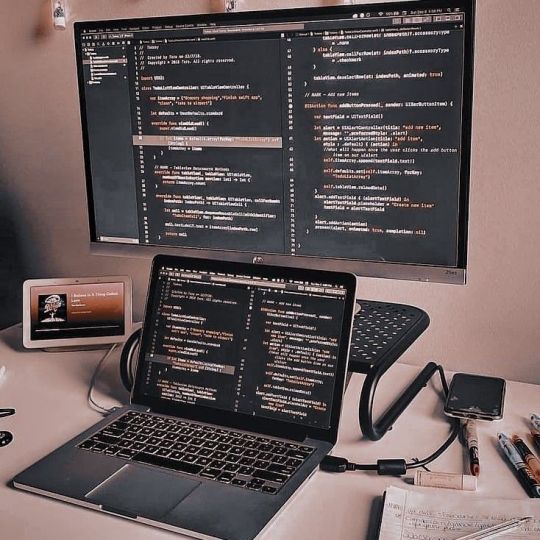


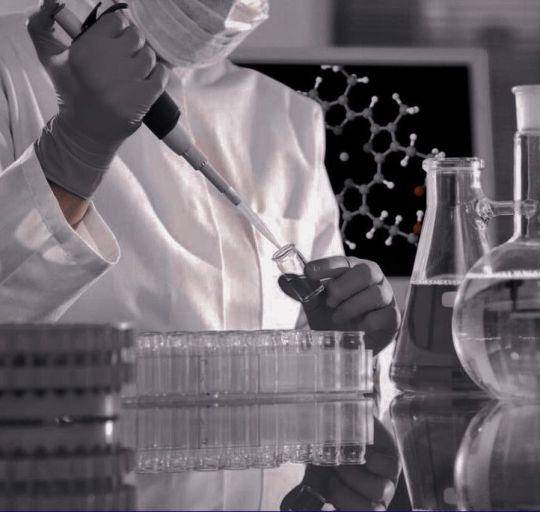
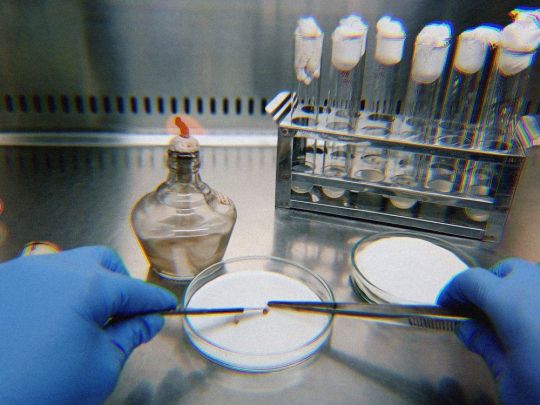
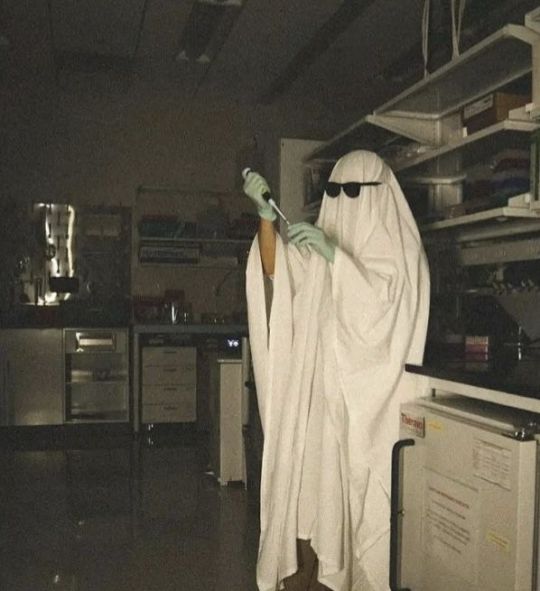

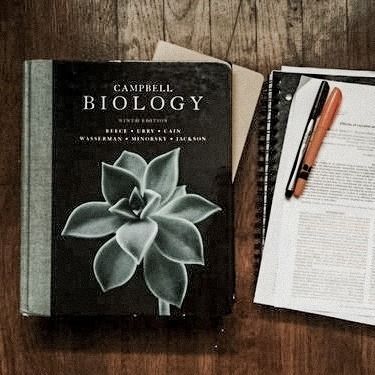

Stem Academia | My degree as aesthetic | Do repost with yours!!
#academia aesthetic#studyblr#study notes#studying#women in stem#stem academia#stem moodboard#stem student#science#programming#computational biology#biotechnology#biotech#study aesthetic#research#molecular biology#genetics#degree as aesthetic
97 notes
·
View notes
Text


July 16th - coffee shop day ft. ramen from my roommate's birthday
Visited a cute local coffee shop with my roommate! I got a latte with almond syrup, which was good, but not as good as hazelnut. I finally got a plot to show the overall results of my project, and it shows interesting stuff (that I can't explain in detail because it's confidential 😭), so that's super exciting! I also got a start on my final presentation slides. I'm glad I have an overall conclusion to make instead of just a bunch of random observations. Tomorrow is for working on the slides more, which I unfortunately no longer really have an excuse to put off.
#julietdoesaresearchinternship#juliet studies#studyblr#studying#student#biology#bio student#julietstudies#coding#python#undergraduate research#computational biology#research
13 notes
·
View notes
Text

day 20 // 100dop
day 2/3 of final exam review 🙈🙈
Goals today:
Finish module 2 review ✅
Finish module 3 review ✅
Finish module 4 review - i have 2 pages left to read but i think i need a fresh brain for me to remember it...
Continued filling cheatsheet ✅ (omg there's sm more i wanna put in here i hope i have the space 😬😬😬)
Day 13: What misconception about your subject annoys you?
That life sciences is the "easy science". IT ABSOLUTELY IS NOT!!!! 🤣 Asides from the great volume of info you have to remember, to really understand it, you have to know chemistry, which is based on quantum physics (which is... 90% math tho thankfully I don't have to know it) and they're making me cover allll this and more in my degree (don't even get me started on the complexity of biochemistry, which I can't understand until I've covered general chemistry) and... Idk who would call this easy if you're covering this stuff for the very first time??? Perhaps they were talking about high school biology because that was a breeze 🙄
Hehe...I just realized that this maybe sounds very discouraging to those who may be considering this degree or smth similar... 😅 Truth be told, no matter how much I complain, I would much rather be doing this than something else! It's so fascinating to learn about how all of the natural sciences intersect to create us and all other living beings and how what we know leads to so much more to know that it creates entirely new fields! Like, literally every word in the acronym STEM converges in the life sciences - how cool is that! And all of this can be used to help people! So for me, it's definitely a fulfilling field to be in. So...as long as you personally are interested in this field and are NOT thinking of getting into this program because "it's easy", I'd highly recommend it!
#stemblr#chemblr#stem academia#studyblr#stem student#dark academia#subatomicstudychallenge#dark academia aesthetic#chaotic academia aesthetic#chaotic academia#100dop#100 days of productivity#medblr#bioinformatics#bioblr#astudentslifebuoy#sarahstudieschem#computational biology
15 notes
·
View notes